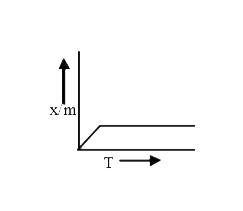10mg of an adsorbate gets adsorbed on a surface. This causes the release of 3J of heat at constant pressure and at 27∘––C. [Molar mass of adsorbate = 100 g/mol].
(i) Find △Hadsorption.
(ii) Argue whether the adsorption is physical or chemical ?
(iii) If 20 mg of adsorbate is adsorbed at temperature T0. Then compare T0 and 27∘––C :
T0<27∘––C
Topper's Solved these Questions
- SURFACE CHEMISTRYBOOK - RESONANCECHAPTER - SURFACE CHEMISTRYEXERCISE - Section (B)
4 Videos
- SURFACE CHEMISTRYBOOK - RESONANCECHAPTER - SURFACE CHEMISTRYEXERCISE - Section (C)
7 Videos
- SURFACE CHEMISTRYBOOK - RESONANCECHAPTER - SURFACE CHEMISTRYEXERCISE - Solved Problems
11 Videos
- STRUCTURAL IDENTIFICATIONBOOK - RESONANCECHAPTER - STRUCTURAL IDENTIFICATIONEXERCISE - Advanced level Problems (Part-III)
12 Videos
- TEST PAPERSBOOK - RESONANCECHAPTER - TEST PAPERSEXERCISE - PT-03
1 Videos
Similar Questions
10mg of an adsorbate gets adsorbed on a surface. This cause the release of 3J of heat constant pressure and at 27∘C. [Molar mass of adsorbate=100g/mol].
(i) Find ΔHAD
(ii) Argue whether the adsorption is physical or chemical?
(iii) If 20 mg of adsorbate is adsorbed a temperature T0. Then compare T0 and 27∘C.
View Solution10mg of an adsorbate gets adsorbed on a surface. This cause the release of 3J of heat constant pressure and at 27∘C. [Molar mass of adsorbate=100g/mol].
(i) Find ΔHAD
(ii) Argue whether the adsorption is physical or chemical?
(iii) If 20 mg of adsorbate is adsorbed a temperature T0. Then compare T0 and 27∘C.
View Solution
Knowledge Check
Which plot is the adsorption isobar for chemisorption where x is the amount of gas adsorbed on mass m (at constant pressure at temperature T ?
A B
B C
C D
D
Which plot is the adsorption isobar for chemisorption where x is the amount of gas adsorbed on mass m (at constant pressure) at temperature T -
A B
B C
C D
D
A solution containing 4.0 g of PVcC in 2 liter of dioxane (industrial solvent ) was found to have an osmotic pressure 3.0 x 10−4atm at 27∘C. The molar mass of the polymer (g/mol) will be :
A1.6 x 104B1.6 x 105C1.6 x 103D1.6 x 102
A solution containing 4.0 g of PVcC in 2 liter of dioxane (industrial solvent ) was found to have an osmotic pressure 3.0 x 10−4atm at 27∘C. The molar mass of the polymer (g/mol) will be :
View SolutionThe molar heat capacity of water at constant pressure, C, is 75JK−1mol−1. When 1.0 kJ of heat is supplied to 100 g water which is free to expand, the increase in temperature of water is :
View SolutionAdsorption is accompanied by the evolution of heat. Thus, according to Le Chatelier's principle the amount of surface adsorbed should
(i) decrease with increase in temperature
(ii) decrease with decrease in temperature
(iii) increase with increase in temperature
(iv) increase with decrease in temperature
View SolutionA solution containing 4.0 g of PVcC in 2 liter of dioxane (industrial solvent ) was found to have an osmotic pressure 3.0 x 10−4atm at 27∘C. The molar mass of the polymer (g/mol) will be :
View SolutionThe molar heat capacity of water at constant pressure, C, is 75JK−1mol−1. When 1.0 kJ of heat is supplied to 100 g water which is free to expand, the increase in temperature of water is :
View Solution
